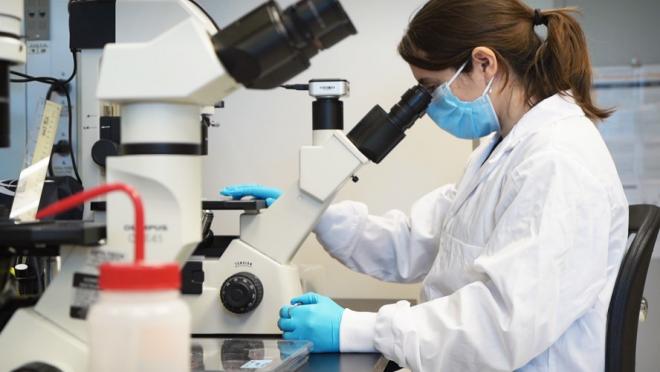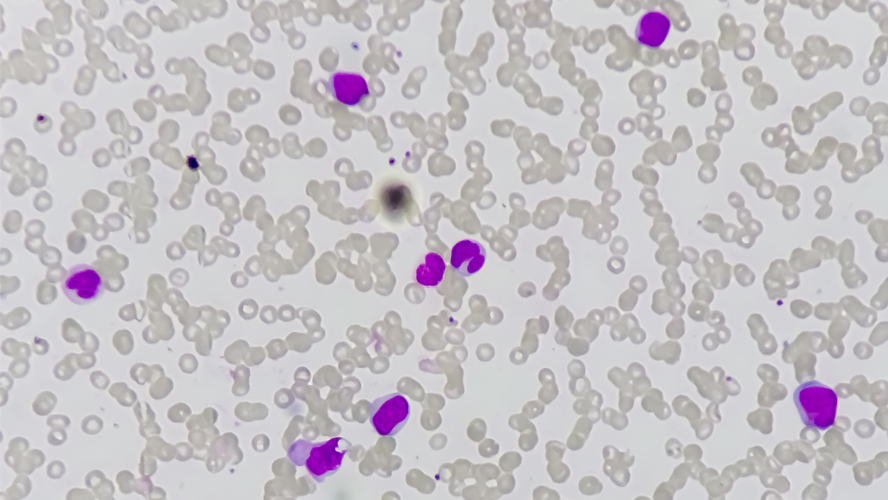
A team led by Dr. Courtney Jones at the Princess Margaret Cancer Centre (PM) discovered that a protein involved in cellular metabolism called SIRT3 could serve as a therapeutic target for acute myeloid leukemia (AML).
AML is the most common type of blood cancer in adults and it arises from leukemia stem cells. These cells can divide and multiply to give rise to all types of cancer cells present in an individual patient.
"New AML treatments are needed that can target and kill leukemia stem cells to prevent relapse,” says Dr. Jones, a PM Scientist and an Assistant Professor at the University of Toronto’s Department of Medical Biophysics.
“In this study, we focused on a protein called SIRT3. Previous findings suggested that this protein is involved in how cancer cells produce energy and has been linked to AML survival. This led us to explore the idea of targeting it in leukemia stem cells—to see if we could essentially starve these treatment-resistant cells.”
As a first step, the researchers explored whether SIRT3 is important for the survival of leukemia stem cells. To test this, they shut down the expression of SIRT3 in experimental models of leukemia.

Image of study’s first author, Cristiana O’Brien, viewing cancer cells under a microscope.
“We could not have been happier with what we found. We discovered that SIRT3 was essential for the survival of human leukemia stem cells, and, importantly, we determined that it was not needed by normal blood stem cells,” says Cristiana O’Brien, a master’s student in Dr. Jones’ lab. “This finding has significant clinical implications, because it means that we can potentially target the cancer stem cells without harming healthy blood cells.”
Next, they delved deeper into the molecular mechanisms underlying SIRT3's role in leukemia stem cells. They discovered that SIRT3 supports energy production in these cells by regulating fatty acid oxidation.
The researchers also identified two ways to better target SIRT3 and kill leukemia stem cells. First, they found that disrupting the production and use of cholesterol in these cells made them more vulnerable to SIRT3 inhibition. Second, the researchers found that combining SIRT3 inhibition with a drug commonly used to treat AML called venetoclax led to an improved response.
"Our findings establish SIRT3 as a key regulator of fat metabolism and a potential therapeutic target in primitive AML cells,” says Dr. Jones. “This discovery opens up new avenues for developing targeted treatments—including combination therapies—that could improve the outcomes for patients with this deadly form of leukemia."
This work was supported by the University of Toronto, the National Institutes of Health, the Government of Ontario, the Ontario Institute of Cancer Research, the Canadian Institutes of Health Research, the Canadian Cancer Society, the Terry Fox Research Institute, the University of Colorado, the Leukemia & Lymphoma Society, the American Society of Hematology and The Princess Margaret Cancer Foundation. Dr. John Dick holds a Tier 1 Canada Research Chair in Stem Cell Biology. Dr. Anastasia Tikhonova holds a Tier 2 Canada Research Chair in Stem Cell Niche Biology. Dr. Courtney Jones is an Assistant Professor of Medical Biophysics at the University of Toronto and holds a Tier 2 Canada Research Chair in Leukemia Stem Cell Metabolism.
Drs. Lin and Melnick received funding from the Falk Medical Research Foundation during the conduct of the study. Dr. Lin received other support from Sedec Therapeutics outside the submitted work. Dr. Melnick received funding from Janssen, Epizyme, Sanofi and Daiichi Sankyo, and personal fees from Janssen, Epizyme, AstraZeneca, Bristol Myers Squibb, Daiichi Sankyo and Exo Therapeutics outside of the submitted work; and a patent for 8635-01-US issued. Dr. Dick receives royalties from Trillium Therapeutics Inc, has a commercial research grant from Celgene/BMS and receives institutional licensing fees for AML models.
O'Brien C, Ling T, Berman JM, Culp-Hill R, Reisz JA, Rondeau V, Jahangiri S, St-Germain J, Macwan V, Astori A, Zeng A, Hong JY, Li M, Yang M, Jana S, Gamboni F, Tsao E, Liu W, Dick JE, Lin H, Melnick A, Tikhonova A, Arruda A, Minden MD, Raught B, D'Alessandro A, Jones CL. Simultaneous inhibition of Sirtuin 3 and cholesterol homeostasis targets acute myeloid leukemia stem cells by perturbing fatty acid β-oxidation and inducing lipotoxicity. Haematologica. 2023 Apr 6. doi: 10.3324/haematol.2022.281894.

Microscope image of the immune cells (purple) found in blood, from which acute myeloid leukemia originates.




